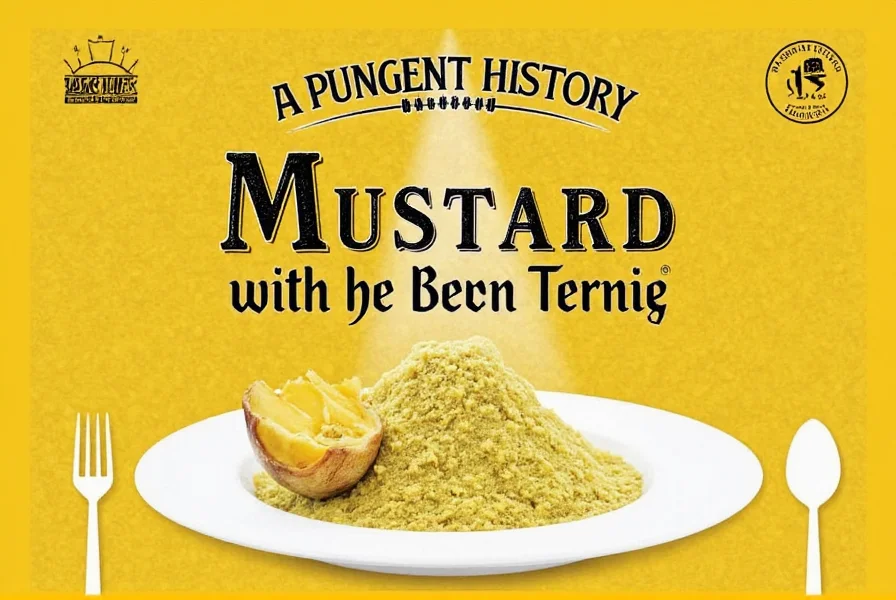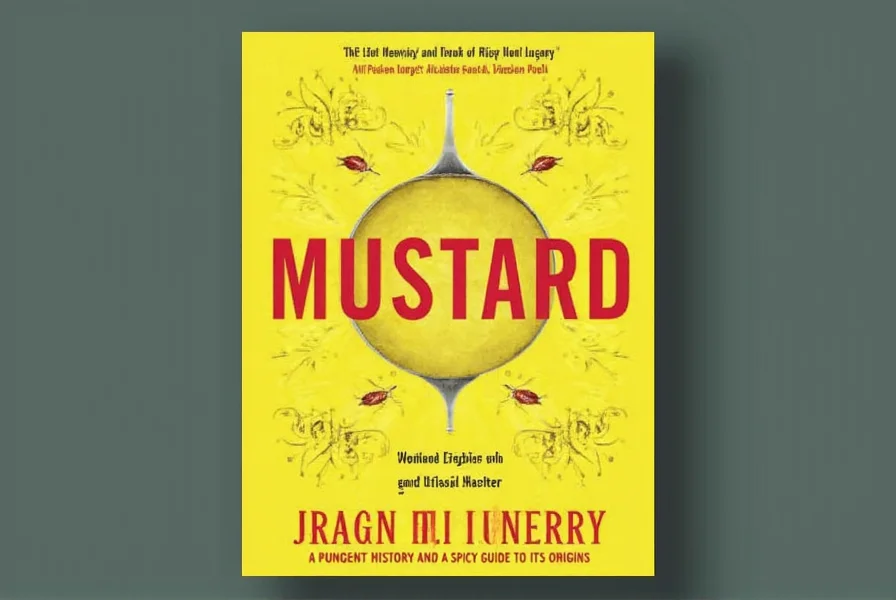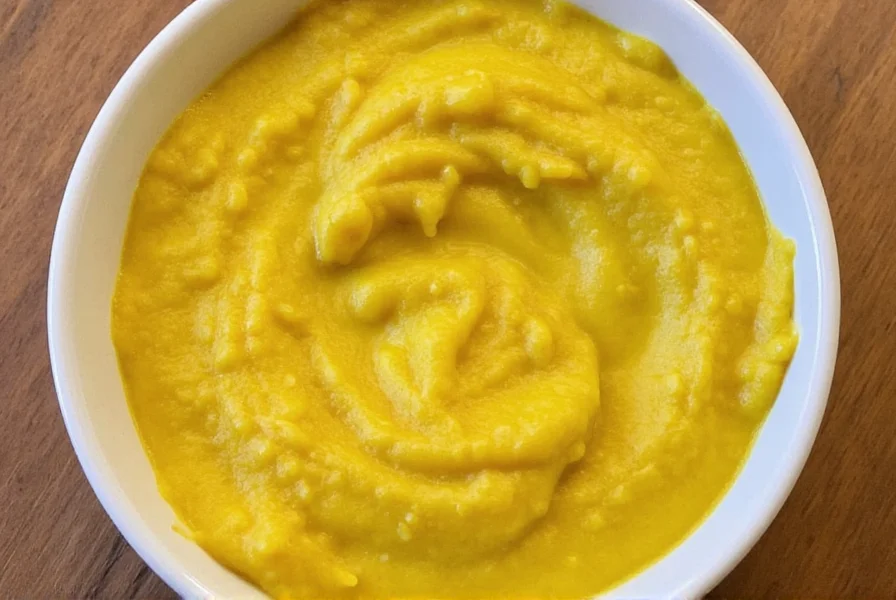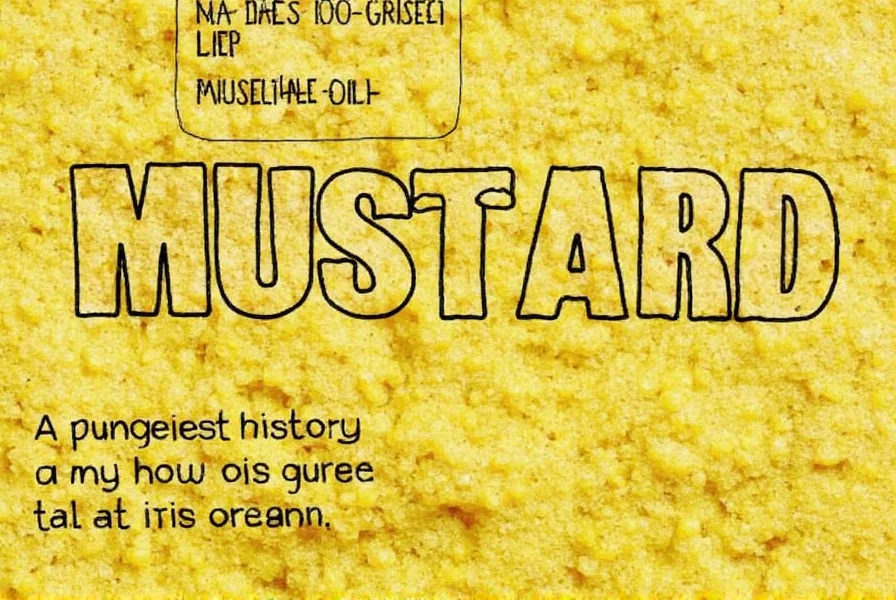Mustard comes from the seeds of plants in the Brassica family, including black mustard (Brassica nigra), white/yellow mustard (Brassica alba), and brown/Indian mustard (Brassica juncea). These seeds are ground and mixed with liquids like water, vinegar, or wine to create the pungent condiment we know today.
The Origins of Mustard
The history of mustard stretches back over 5,000 years. Ancient Egyptians used mustard as a medicinal remedy, while the Greeks and Romans prized it for its flavor and preservative qualities. The Roman Empire was particularly fond of mustard, even using it as a form of currency in some regions.

So, what does mustard come from? The answer lies in the humble mustard seed. These tiny seeds, when crushed and mixed with liquid, release a powerful, sharp flavor that has captivated palates for millennia.
Types of Mustard and Their Flavors
There are several types of mustard, each with its own unique taste and use. Here's a quick breakdown:
- Yellow Mustard: The most common type, made from white mustard seeds. It's mild and tangy, perfect for hot dogs, burgers, and sandwiches.
- Dijon Mustard: Made from brown mustard seeds and white wine. It has a sharper, more complex flavor and is often used in dressings and marinades.
- Whole Grain Mustard: Contains coarsely ground seeds, giving it a textured, robust flavor. Great for spreads and dips.
- Spicy Brown Mustard: Made from brown mustard seeds and sometimes includes added spices like garlic or horseradish. Ideal for bold flavors in sauces and rubs.
- English Mustard: Known for its intense heat, it's often used in traditional British recipes like steak and kidney pie.

Each type of mustard has its own story and place in culinary traditions. Whether you prefer the mellow bite of yellow mustard or the fiery punch of spicy brown, there's a variety out there to suit your taste.
Practical Tips for Using Mustard
Mustard isn't just for slathering on a burger. Here are some practical tips to help you get the most out of this versatile condiment:
- Use it as a base for dressings: Mustard adds depth and acidity to vinaigrettes and creamy dressings.
- Add it to marinades: The enzymes in mustard help tenderize meats and infuse them with flavor.
- Make your own mustard at home: Try grinding your own seeds with vinegar or water for a fresher, more intense flavor.
- Pair it with strong cheeses: Mustard complements sharp cheddar, blue cheese, and aged gouda beautifully.
- Try it in baked goods: Some recipes use mustard to add a subtle kick to breads, cookies, and cakes.

Don't be afraid to experiment! Mustard can elevate everything from grilled meats to salads and even desserts.
Buying Guide: Choosing the Best Mustard for You
| Mustard Type | Best For | Features | Target Audience |
|---|---|---|---|
| Yellow Mustard | Burgers, hot dogs, sandwiches | Mild, tangy, and sweet | Everyone, especially casual eaters |
| Dijon Mustard | Dressings, marinades, gourmet dishes | Sharp, complex, and slightly acidic | Chefs, foodies, and those who enjoy fine dining |
| Whole Grain Mustard | Spreads, dips, and rustic dishes | Coarse texture, bold flavor | Those who like texture and intensity |
| Spicy Brown Mustard | Grilled meats, sausages, and bold sauces | Hot, pungent, and full of character | Spice lovers and adventurous eaters |
| English Mustard | Traditional British dishes, hearty meals | Very strong and intensely flavored | Fans of classic British cuisine |
When shopping for mustard, look for high-quality ingredients and avoid overly processed products. If you're looking for a natural option, consider making your own at home. Just grind fresh seeds and mix with vinegar or water for a homemade version that's bursting with flavor.
Frequently Asked Questions
What does mustard come from?
Mustard comes from the seeds of plants in the Brassica family. Specifically, it's made from the seeds of black mustard (Brassica nigra), white/yellow mustard (Brassica alba), or brown/Indian mustard (Brassica juncea). When these seeds are ground and mixed with liquid (like water, vinegar, or wine), they release enzymes that create mustard's characteristic pungent flavor.
Where do mustard seeds come from?
Mustard seeds come from mustard plants, which are flowering plants in the Brassicaceae family. These plants produce small pods containing the tiny mustard seeds. Different varieties of mustard plants produce different colored seeds (yellow, brown, or black), which determine the type and flavor of mustard produced. Mustard plants are grown commercially in countries like Canada, Nepal, the UK, and the US.
How is mustard made?
Mustard is made by grinding mustard seeds and mixing them with liquid. The process involves:
- Harvesting ripe mustard seeds from the mustard plant
- Cleaning and sometimes dry-roasting the seeds
- Grinding the seeds into a powder or leaving them whole/coarsely ground
- Mixing with liquid (water, vinegar, wine, or beer) which activates enzymes in the seeds
- Adding other ingredients like salt, spices, sugar, or flavorings
- Allowing the mixture to rest so flavors develop
The type of seed and liquid used, plus additional ingredients, determine the final flavor, color, and texture of the mustard.
What plant does mustard come from?
Mustard comes from several related plants in the Brassica genus:
- Brassica nigra (black mustard) - produces small black seeds used in Dijon and other strong mustards
- Brassica alba (white/yellow mustard) - produces larger yellow seeds used in American yellow mustard
- Brassica juncea (brown/Indian mustard) - produces brown seeds used in spicy brown mustards
These plants are annuals that grow 3-8 feet tall, with yellow flowers and seed pods that contain the mustard seeds.
Is mustard made from mustard plants or something else?
Yes, mustard is made directly from mustard plants. Specifically, it's made from the seeds of mustard plants (Brassica species). While the term "mustard" refers to the condiment we eat, it also refers to the plants themselves. Mustard plants are grown specifically for their seeds, which are then processed to make the mustard condiment. Some mustard plants are also grown as leaf vegetables (like mustard greens) in addition to being grown for their seeds.
Conclusion
So, what does mustard come from? As we've seen, it starts with the humble mustard seed—tiny, unassuming, yet packed with flavor. From ancient times to modern kitchens, mustard has remained a beloved condiment that adds a unique kick to every dish.
Whether you're a seasoned chef or a curious foodie, understanding the origins and uses of mustard can enhance your cooking experience. With this guide, you're now equipped to explore the world of mustard with confidence and creativity.











 浙公网安备
33010002000092号
浙公网安备
33010002000092号 浙B2-20120091-4
浙B2-20120091-4